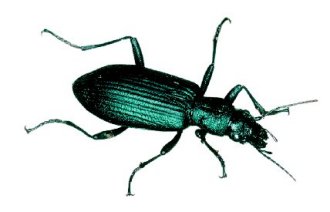 |
|||
|
|
|
|
|
 |
|||
|
|
|
|
|
1999: Right Here, Right Now
At Dinosaur Hall
This hall is more sensational than ever. Quetzalcoatlus northropi , the largest flying dinosaur of all time, soars high above its earth-bound reptilian companions. Want to know how a dinosaur expert handles fossils? You can look over the shoulder of a paleontological preparator at work right in the hall. And every hour, the entire hall comes alive with sound and light. A professionally produced multi-media show—the first of its kind in a museum dinosaur exhibit—displays the Carnegie dinosaurs in all their glory and creates the illusion that the beasts are moving within the room. And don’t forget to visit Dippy! "Dippy" showed up in July and quickly
become a Pittsburgh landmark. Just in time for the turn of the millennium,
the museum unveiled this giant tribute to its most famous exhibit--a full-scale
replica of Diplodicus carnegii right outside the museum.
"What’s New on the Earth" opened this fall, an exhibit that’s
always changing, just like the earth. Each and every day, breaking news
about earthquakes, volcanic eruptions, and weather formations is delivered
at this fast-paced, electronic exhibit. A video wall broadcasts the latest
and greatest scientific news via Discovery Channel and other news sources.
Hands-on and interactive, the new exhibit provides a real-time update on
world-wide seismic activity, as well as oceanic and meteorological data.
Pennsylvania geology is also highlighted, including a multi-media look
at the geologic events that shaped our region’s rivers, hills and forests.
Making News in ‘99
In 1999, Carnegie paleontologist Luo Zhexi and his colleagues explained the evolutionary significance of a now-extinct Mesozoic mammal whose skeleton was found in the "Feathered Dinosaur" excavation site in China. Luo and colleagues concluded that the triconodont was indeed capable of walking—a fact that shows a more complex evolution of mammals than was previously thought. Luo’s work was the subject of media coverage in more than 22 countries. The Discovery Channel came to the museum to meet Dr. Luo and to learn more about our outstanding dinosaur collection. Chips, the robotic tour guide in Dinosaur Hall, and dinosaur artists Mark Klingler and Michael Skrepnick were also featured. Alan Alda, host of Scientific American Frontiers, also came to the museum in 1999 to film a segment on the museum’s use of interactive robots and other high tech approaches to museum education. 
Carnegie Lectures on Environmental Change
November: E. Brown-Weiss: International law and global environmental
change
December:An Inuit Carver in Polar WorldNovember 6, noon to 2:00 pm.
Planet GolfBe sure to set aside time to tee off at Planet Golf, a traveling exhibit that departs the museum on January 2., 2000. Planet Golf is a playful miniature golf course that takes you on a fun-filled adventure through the natural world. For a modest $2.00 "greens fee," you can putt through a indoor, 18-hole miniature golf course. You’ll not only sharpen your golf game, but will learn about butterfly metamorphosis, recycling, water pollution, dinosaur extinction and other aspects of the earth’s history and environment. Players face a variety of challenging obstacles. A great holiday activity for kids.Bigger and Better in 2000From Pow-Wow to Wow!Year 2000 Carnegie Lectures on Environmental Change
Pow-WowMay
More Dinosaurs!
Carnegie Gem and Mineral ShowAugustThe Carnegie Gem and Mineral Show is one of the premier shows of its type in the nation. Now in its third year, the Gem and Mineral Show . This past August, more than 5000 visitors came to Oakland during this event. Many people admired, bid for, and bought gems and jewelry during the three-day event. For young rockhounds, there were fun, hands-on activities. Curator Marc Wilson and his team of volunteers are planning a spectacular event for 2000.Preservation FairOctoberThe museum will once again offer the public an opportunity to learn how to save old photos, documents and other personal treasures. This day-long event showcases basic conservation techniques taught by experts. You are invited to bring in items for preservation advice. |
|
|
|
|
|
|
All rights reserved. E-mail: carnegiemag@carnegiemuseums.org |
|||